In This Issue: Ethically Speaking: The Morally Grey in Biology On My Mind: Everything Neuroscience!
The Animal Kingdom: Friends or Foe?

In This Issue: Ethically Speaking: The Morally Grey in Biology On My Mind: Everything Neuroscience!
The Animal Kingdom: Friends or Foe?
The DNA Alphabet: Mutations, Innovations and Exceptions
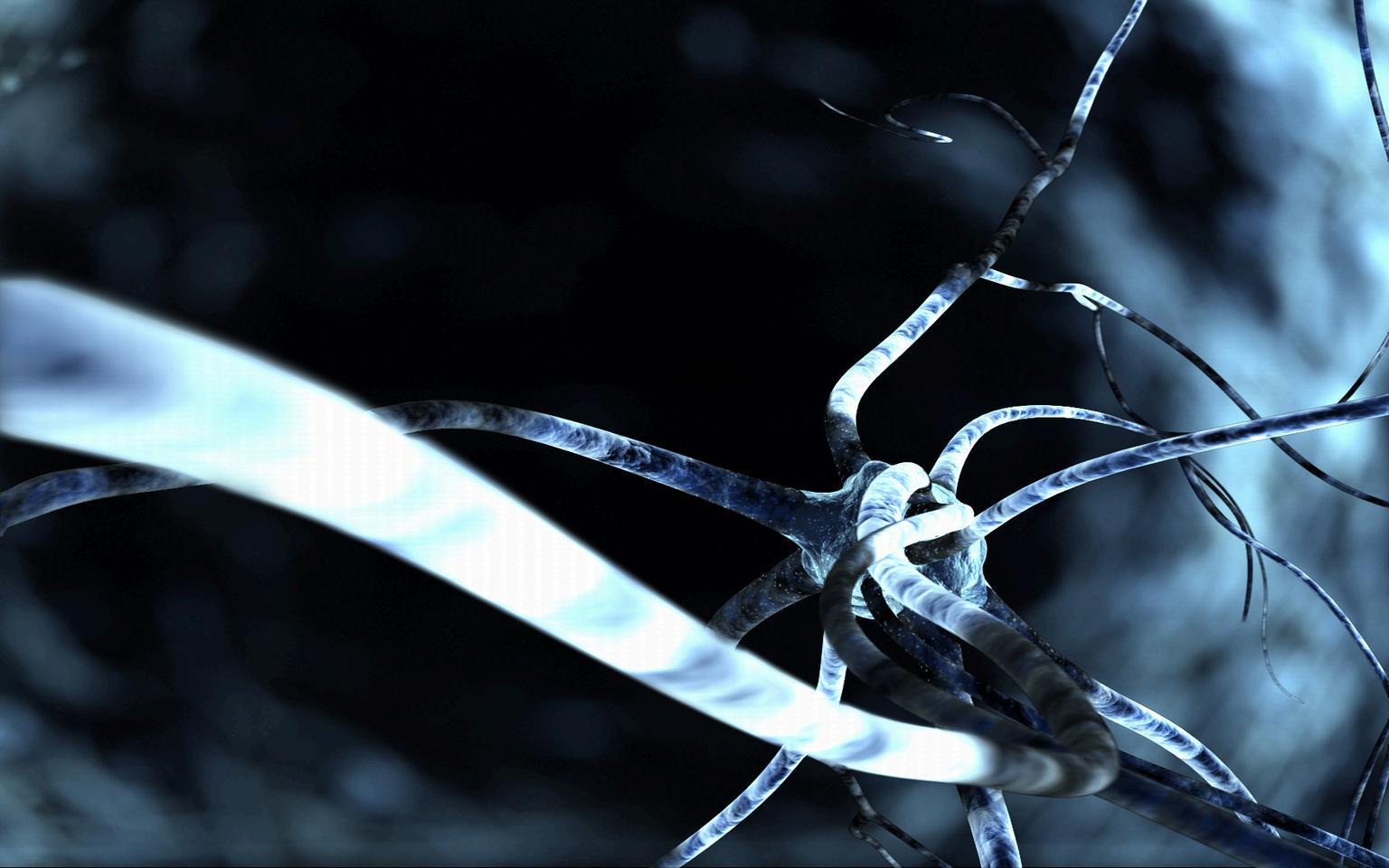
“What you learn from a life in science is the vastness of our ignorance.”
David Eagleman
Neuroscientist



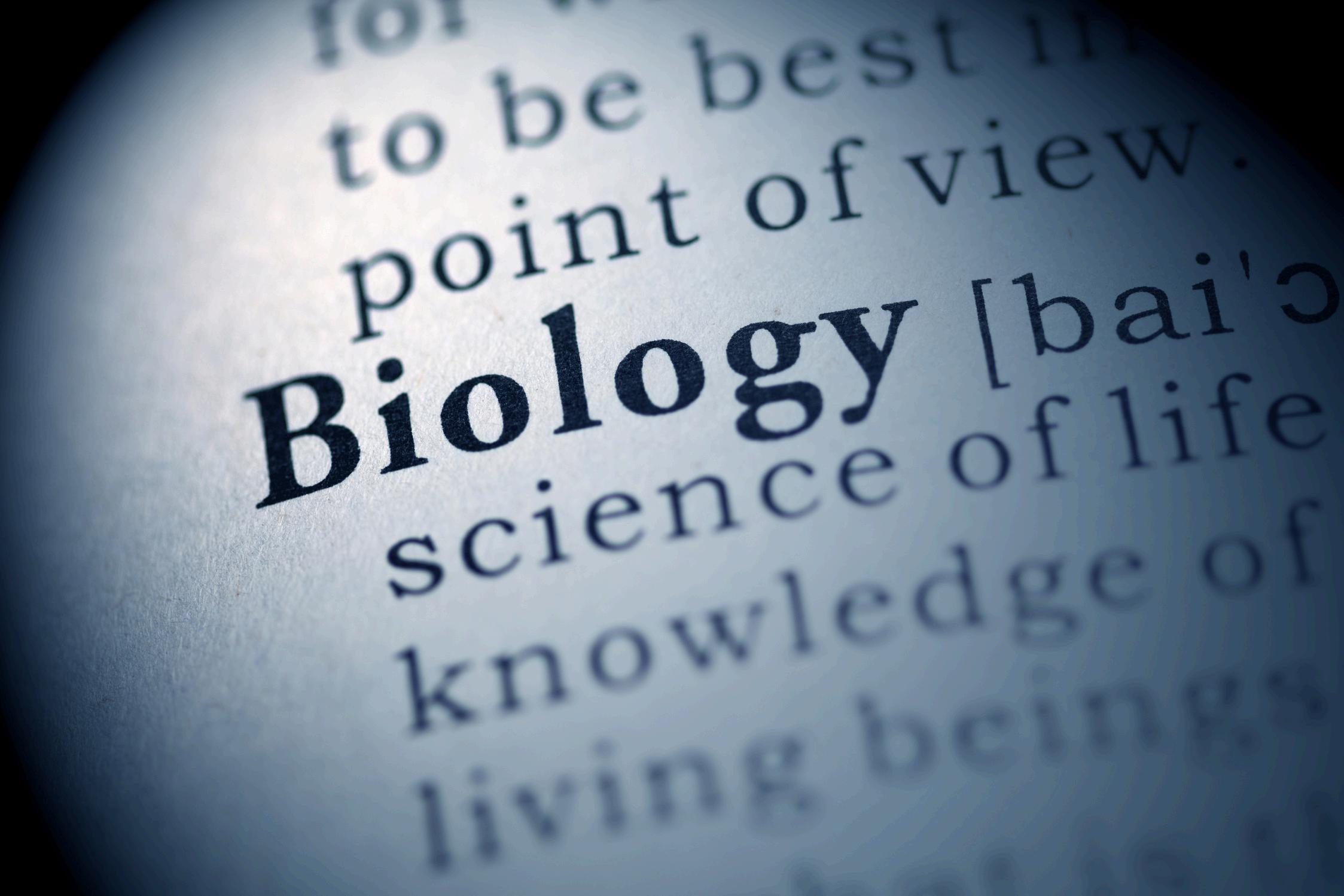
As we present to you the fourth edition of The Cell Cycle, the much awaited "Summer Issue", I am filled with pride, joy and gratitude The unwavering commitment and contagious enthusiasm shown by every single contributor in this issue have once again culminated in a collection of articles that push the boundaries of how people think about biology: No longer a monotonous subject to rote-learn, but rather a beautiful and delicate mystery that contains the secrets of the universe Our writers, editors and designers challenge us to look at the natural world around us with fresh eyes and to reflect on the understated phenomena we often overlook
To all the contributors- Your passion and determination breathe life into this magazine Your ability to continually come up with thoughtful and engaging content never ceases to amaze me It is your ideas that are expressed so effectively in the pages of The Cell Cycle that allow it to thrive and stand out as a prominent platform in our community Thank you for all your outstanding efforts Our Head of Department of Design and Social Media and Head of Department of Content Creation and Writing deserve a special commendation- Your minute attention to detail, your ability to harmonize the visual and the written, and your tireless work behind the scenes is an inspiration to all
With every issue, The Cell Cycle expands its reach, gaining a larger membership and readership From casual criticisms from peers and teachers, to lengthy feedbacks from industry experts, our audience has played a vital role in building The Cell Cycle This magazine is a testament to the potential of students that knows no bounds, proving that age is never a limiting factor when it comes to exploring new ideas and imagining a new future for science
In m ese pages This issue brings to you cloning to the neuroscience of ma s issue, you will learn about a con organize itself as a result of env ome challenges and become incr son in biology, but a lesson for life: y adapt to the every-changing circ
At
ve to evolve, ensuring we meet you into the pages of the Summer Issu













Adithi Ponnambalam, Grade 12
Human Cloning – sounds like something from a science fiction movie, doesn’t it? The human body is a complex and intricately crafted structure: composed of various interlinked systems such as the countless capillaries that transport our blood and the chains of phosphate, sugar and nitrogen bases that make up our DNA. Imagine trying to replicate ALL of this. At first glance, it may seem impossible. Yet, through biological tenacity, researchers have discovered that human cloning is, in fact, a possibility.
Stem cells--those cells that can develop into various different types of cells in the body--can be extracted from embryos. As a result, the creation of embryonic stem cells through therapeutic cloning has been deemed highly likely to aid the development of cures for conditions such as Alzheimer’s and Diabetes.
Due to ethical reasons, it had been banned in several countries such as the U S and Australia, preventing further research However, in 2006, Australia lifted this ban to allow the progress of research after deeming that its potential benefits had outweighed the ethical costs.
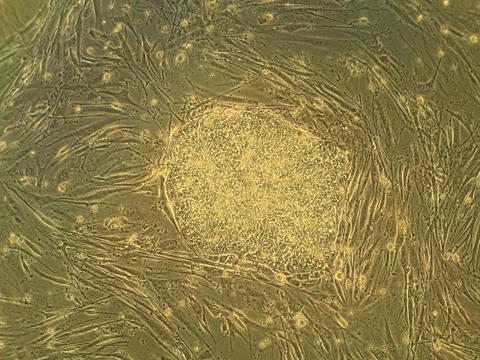

In 1996, “Dolly” was born as a result of cloning a Finn-Dorset sheep. She was the first cloned mammal in history.
Research is still being done on the cloning of humans, but there have been no reported cases of cloned humans. Scientifically, it is possible. Practically, it has not yet worked. The question of the hour remains: when will we discover the way to clone humans?
Parissa Luthra, Grade 11
We have all been aware of vaccinations since childhood. Whether through the nurses who would give us the polio vaccines at home or the need to get a rabies shot after a traumatising dog bite, vaccines have been a key part of our lives. Have you ever wondered how these injections actually work?
What are vaccinations?
Vaccines are products that help our body fight diseases by working against pathogenic organisms. They contain weakened or dead viruses which, once consumed, do not harm the body; instead, they stimulate an immune response though the production of antibodies by our white blood cells
This occurs in response to the antigens of the virus: specific molecules found on their surface (as shown in fig 1.1). In the case of COVID-19, the antigen is typically the characteristic spike protein (fig 1.2) which it uses to help infect human cells
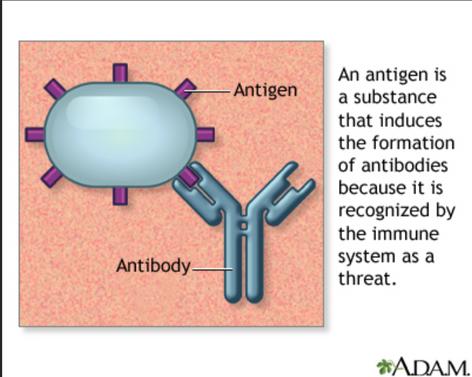
Another fascinating fact about our immune system is that once these antibodies are created, they remember how to combat and destroy these pathogens the next time they enter your body, providing long-lasting (or active) immunity. The cells responsible for this process are known as memory-b cells. Most vaccines work by exposing your immune system to antigens that will cause the production of such memory cells If an invader appears, your body can mount a swift counterattack by recognising those antigens.
An important recent vaccine is that for the covid 19 virus According to Gavi Org (a vaccination company that helps vaccinate many children against deadly diseases), there are more vaccine candidates simultaneously in the pipeline for COVID-19 than ever before for an infectious disease Another common vaccine, especially in India, is the polio vaccine Polio, or poliomyelitis, is an illness caused by a virus that affects nerves in the spinal cord or brain stem. In its most severe form, polio can lead to paralysis. It can also lead to difficulties in breathing and even death. Two types of vaccines are used for polio: - an inactivated poliovirus given by injection (IPV) and a weakened poliovirus given by mouth (OPV). The two vaccines have eliminated polio from most of the world and reduced the number of cases reported each year from an estimated 350,000 in 1988 to 33 in 2018
There are major controversies and conspiracies surrounding vaccines. One is the recent “covaxin” scandal ; as per court documents seen by the British Newspaper the ‘Daily Telegraph’, the pharmaceutical giant AstraZeneca, which developed the vaccine, is being sued for over £100 million (a little over Rs 1,000 crore) in class action over claims that its vaccine caused death and serious injury in 51 cases. Among the claimants is Jamie Scott, a father of two, who was left with a permanent brain injury that prevented him from working after he received the AstraZeneca vaccine in April 2021. More details can be found at the following link.
There are also numerous theories that vaccines do not work, or that they have various other issues, according to our world.org. Yet, only 7% of respondents globally said they “strongly disagree” or “somewhat disagree” with the statement ‘Vaccines are safe’. This goes to show that at the end of the day, vaccines are an essential protective and safety measure in the medical world, hopefully for generations to come.

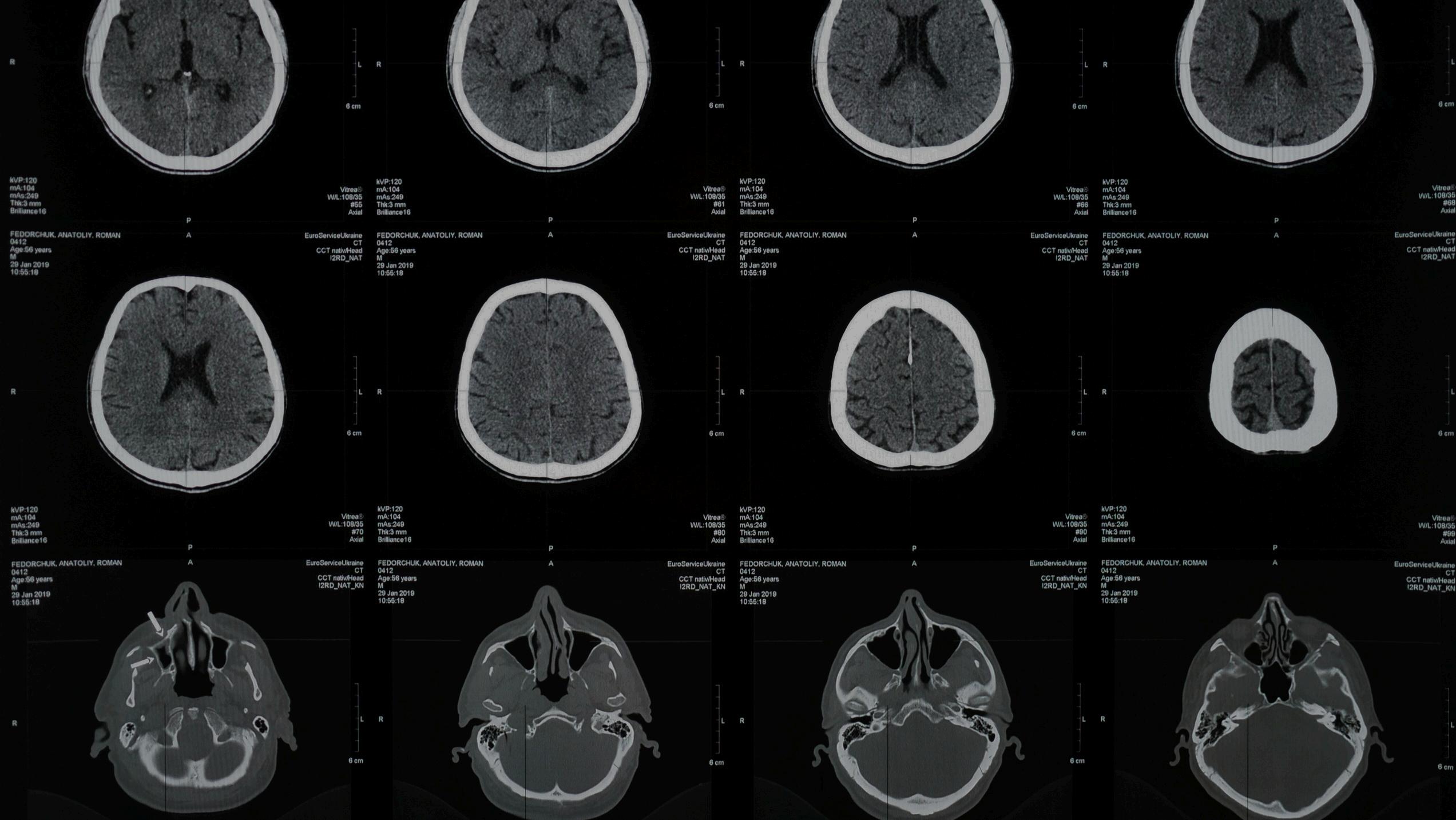

Varanshi Gupta, Grade 10
Neuromarketing, also known as consumer neuroscience, is an emerging disciplinary field that applies techniques from fields like neuroscience and psychology to commercial marketing It studies how human brains respond to stimuli using techniques such as measuring brain activity through fMRI and EEG and recording physiological signals through eye-tracking and biometric measurements. To sum it up, it works by tapping into the subconscious mind of consumers Neuromarketing is prevalent in creating advertisements, product design, and pricing. Let’s discuss how this wo k
In the case of advertising reaction to a business adv further refine the process company NeuroFocus wa sell Cheetos. Using EEGs though most people were reasons they loved Cheet left on their fingers They created an advertisement based on this insight, which received an overall positive response from viewers.
Product design incorporates color choices that trigger emotions affecting our purchasing decisions. Textures and shapes in the packaging are decided by tactile preferences Packaging is altered based on what attracts the most attention in a store, gauged using heat maps. For example, Hyundai measured brain activity in response to different design features and explored which kind of stimulation was most likely to result in buying The results led Hyundai to change the exterior design of the cars


Neuropricing is a pricing strategy based on how consumers perceive prices. It increases consumers’ attention to a brand and influences their purchasing decisions. Examples include sales, discounts, displays, contests, and coupons An example of neuropricing is Lays increasing their price by 0.25 Turkish Lira. A traditional questionnaire predicted that it would cause a 33% drop in sales and wouldn’t be profitable, whereas the neuropricing study guessed it would introduce a 9% drop in sales but remain profitable It wound up resulting in a 7% drop in sales but better profit, proving the neurological study more accurate.
The development of new technologies that make it easier to measure brain activity and other physiological signals suggests a bright future for this field. VR is gaining popularity in neuromarketing as it allows brands to create emotionally engaging experiences By immersing consumers in a brand's story or product, marketers can evoke strong emotional responses

Despite the way neuromarketing has completely revolutionized the marketing field, one question remains. Is it ethical? Many people argue that it is as ethical as any other form of marketing, while others contend that it is more unethical to monitor what’s in someone’s brain and use that knowledge to manipulate them into buying more things. What do you think? Is neuromarketing a harmless new trick in the book, or a weapon used by companies to convince consumers to buy things they don’t need?
Samriddhi Shah, Grade 10
Introduction
Put simply, ‘Neuroplasticity’ allows our brain to change and adapt based on the environment we expose ourselves to. An example: try a math problem. You get it wrong a few times, then finally you get it right The next time you attempt a similar problem, you will grasp it faster because your brain has created the neural connections needed to solve these problems. This is neuroplasticity Neuroplast learning an learn some make and between connections memory concentrati
neuron comes near the dendrite of another This process of synapse formation is called Synaptogenesis.
Synaptogenesis
With frequent exposure to specific stimulus, the connections between neurons are further strengthened This is called Long-term potentiation. This process improves memory and learning pace.
algorithms were much more efficient, we tend to forget about the first version. This can be explained by the fact that our brain starts eliminating unnecessary connections to help us understand in a simple and effective manner This is called Synaptic pruning
Drawing an analogy to reading, when we are learning a new language, we need to wrack our brains to decipher the meaning of a ntence However, once we come more familiar with a nguage, we do not consciously ed to try to understand the eaning of a basic sentence while ading it
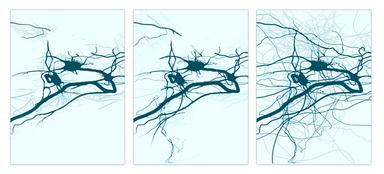
Neuroplasticity
The brain is constantly remodeling itself based on our experiences and thoughts Neuroplasticity is the ability to create new connections between neurons throughout a lifetime. A connection between two neurons is called synapse, and when we learn something new, more synapses are formed To form a synapse, the axonal terminal of one
Neural Reorganisation
Coming back to the math problem analogy, when we first solved the problem, chances are that we would have used a much more complex algorithm than in our second or third try. With repetition we understand the concept in a much more simplified manner As we find that the later versions of the
his is because once we have gained extreme familiarity with a subject, the processing of it shifts from the prefrontal cortex to the basal ganglia The prefrontal cortex is responsible for decision making and attention whereas basal ganglia is responsible for automatic and habitual behavior.
This new learning is integrated in our brain and can be accessed and applied by us with much more ease.
Based on the core axioms of long-term potentiation and synaptic pruning, we can determine the most suitable environment for active and dynamic learning As discovered earlier, spaced repetition and practice are key to learning since they facilitate the formation of new synapses and strengthen existing ones, ultimately leading to improved memory.
When we study a subject, say biology, we tend to remember what we learned at the beginning and end of the learning process better than during the middle. This can be explained by primacy and recency effect
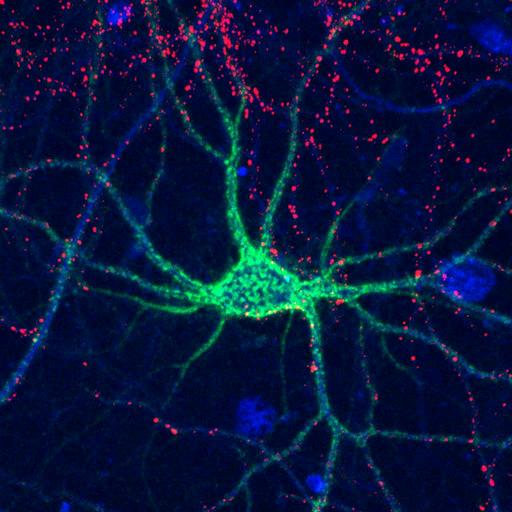

sed on the core axioms of primacy and recency ect, a technique called Pomodoro technique is med. Pomodoro technique requires an dividual to learn or study in intervals of 25 nutes and follow that with a 5-minute break. nce study intervals are smaller, there are more ginnings and endings which we tend to member better.
Aishani Sinha, Grade 11
Within the complex landscapes of the human body exist anomalies that captivate and confound both medical professionals and laypeople alike This article will discuss five bizarre, perplexing syndromes that sound like storybook fantasies, delving into details such as their discovery, causes, symptoms, treatment, and more From surreal perceptual distortions to delusions that seem straight out of a horror movie, get ready to explore the captivating realms of these curious conditions.
Alice in Wonderland Syndrome
Alice in Wonderland syndrome (AIWS), also known as Todd's syndrome, is a rare neurological condition characterized by perceptual distortions that can cause individuals to perceive objec their own bodies as significa larger (macropsia) or smalle (micropsia) than they are, in phenomenon known as metamorphsia According to National Institutes of Health was first discovered in 1955 British psychiatrist Dr John He initially coined the term in Wonderland syndrome” i reference to Lewis Carroll's
"Alice's Adventures in Wonderland," due to the hallucinations experienced by the protagonist in the story. This syndrome, often associated with migraines, viral infections, and epilepsy, typically manifests during childhood and adolescence, though it can occur at any age. The exact cause of AIWS remains elusive, but it is believed to result from abnormal functioning in the brain's sensory regions. Symptoms may include visual hallucinations, time distortions, altered sense of touch, and disorientation. While the origins of the syndrome are still being investigated, treatments often focus on managing underlying conditions and may include medications to alleviate symptoms and prevent migraines.
Foreign Accent Syndrome
Foreign Accent Syndrome (FAS), also known as “pseudo accent” is a rare speech disorder characterized by the sudden onset of speech patterns that are perceived as foreign or accented by listeners. This condition often occurs following neurological events such as strokes, traumatic brain injuries, or migraines, which disrupt the brain's speech production areas


er regions or languages. FAS manifest in several ways ending on the underlying rological cause, and it may coexist with other cognitive or
language impairments. Since its inception in 1907, as recounted by French neurologist Pierre Marie in a case involving a patient displaying an Alsatian accent, only around 100 instances of Foreign Accent Syndrome have been recorded in medical literature as of 2024, making it extremely rare Treatment typically involves speech therapy aimed at improvi communication skills and speech patterns to their p state, although complete may not always be possib
Before you start panickin with this syndrome do no blood thirsty vampires W term "vampire syndrome" may evoke fantastical imagery, it is inspired by the fact that people who have this syndrome often suffer with skin diseases, such as blisters when exposed to sunlight, which is historically associated with the mythical creature “vampire.”
Vampire syndrome, formally known as porphyria, encompasses a group of inherited blood disorders that affect the body's ability to produce heme, an essential component of haemoglobin responsible for binding to oxygen molecules so that they can be transported around the body.
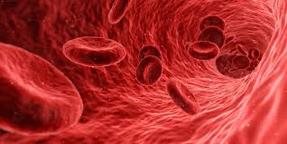
organs, consequently leading to heme deficiency Disease manifestation arises when these porphyrins interfere with the nervous system or become activated by exposure to light. Management of porphyria typically involves avoiding triggers such as certain medications, alcohol, and sunlight, along with t t ts to alleviate symptoms ute attacks.

This condition manifests with a range of symptoms, including sensitivity to sunlight (photosensitivity), skin lesions, abdominal pain, and neurological symptoms such as seizures and hallucinations Porphyria can manifest in various forms, i l di t i termittent nd porphyria T), each with esentations and every instance, it ulation of as porphyrins orphyrins are dergo a series of d by enzymes to uptions in the pathway hinder me despite the yrin, resulting in their buildup within tissues and
Corpse Syndrome, known as Cotard's , is an uncommon order characterized by onal belief that one is , -existent, or that their organs are decayed/ decaying This surreal condition often arises from underlying psychiatric illnesses such as schizophrenia or mood disorders, as well as neurological conditions like epilepsy and brain trauma It can also be caused by heavy drug misuse or other brain infections. Individuals with Cotard's Syndrome may exhibit a range of symptoms, including nihilistic delusions, self-neglect, and a profound sense of detachment from reality. Patients frequently decline to engage in fundamental daily activities essential for functioning, such as eating or sleeping, as they persist in the belief that these actions are unnecessary due to their conviction of already being deceased. The origins of this syndrome dates to year 1880, discovered by French
Psychiatrist Jules Cotard, and it is believed to stem from abnormalities in the brain's neural circuits responsible for processing selfawareness and perception. While it can manifest in various forms and severity levels, treatment typically involves a combination of psychotherapy, medication, and supportive care to address the underlying psychiatric or neurological causes and alleviate distressing symptoms
Broken heart syndrome, a known as takotsubo cardiomyopathy or stresscardiomyopathy, is a temp heart condition characteri symptoms resembling a heart attack, such as che shortness of breath, and ra irregular heartbeat, discov Japan in 1991 It occurs in response to intense emotional or physical stressors, which can trigger a surge of stress hormones like adrenaline, temporarily damaging parts of the heart Numerous factors, including
sudden illness, major surgery, or the loss of a loved one, can precipitate this syndrome. Women, particularly those over 50 and individuals with preexisting mental health conditions, are more susceptible Complications may include pulmonary Edema, low blood pressure, arrhythmias, and in rare cases, heart failure or blood clots in the heart.
Recovery typically takes about 4 to 6 weeks. Despite its potentially alarming presentation, broken heart syndrome is usually reversible, and most individuals recover fully with appropriate medical management and support

Diagnosis typically involves blood tests, electrocardiograms (ECG), coronary angiograms, and echocardiograms. Treatment mirrors that for a heart attack until a clear diagnosis is established with
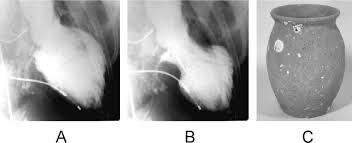

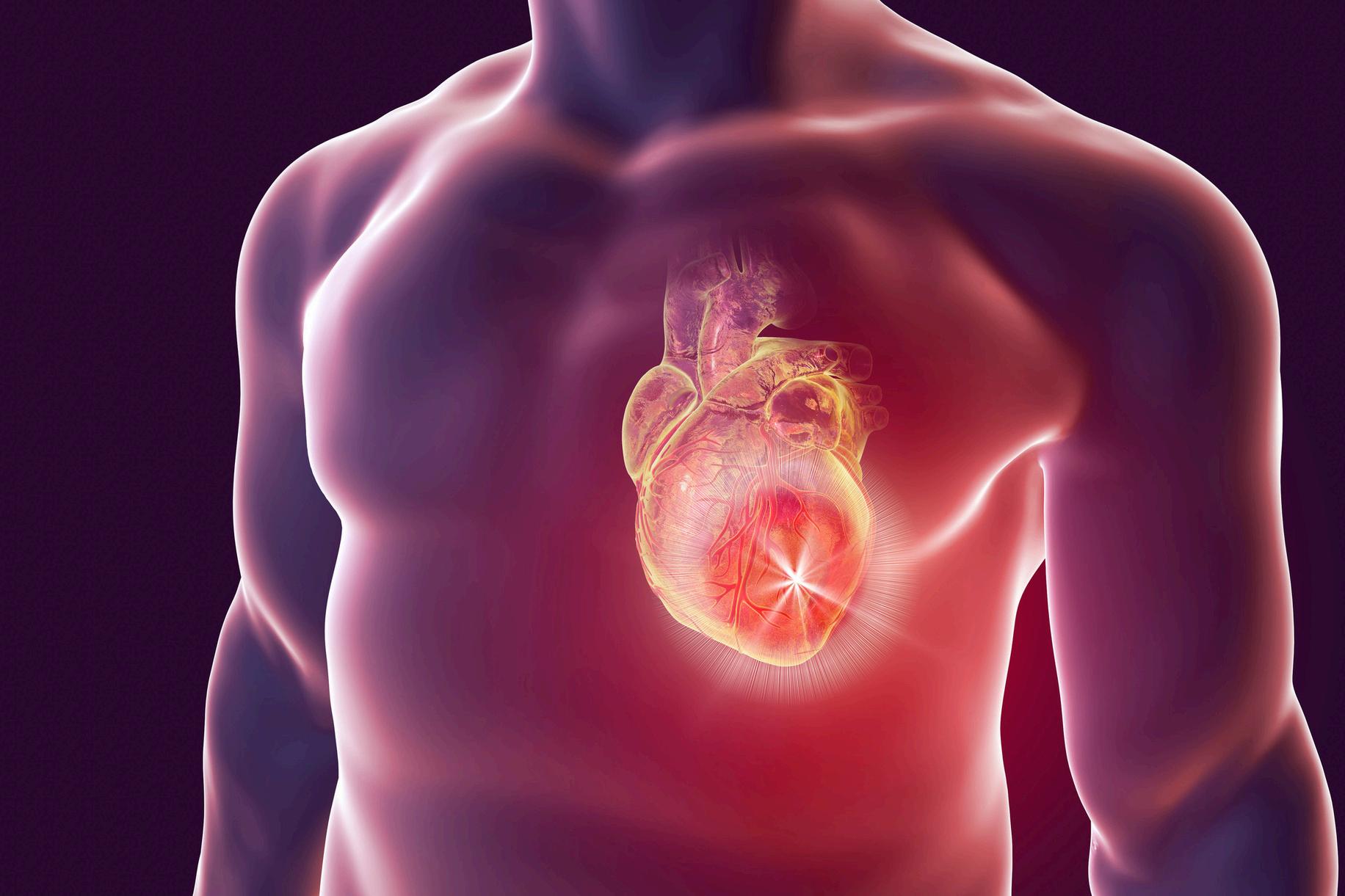
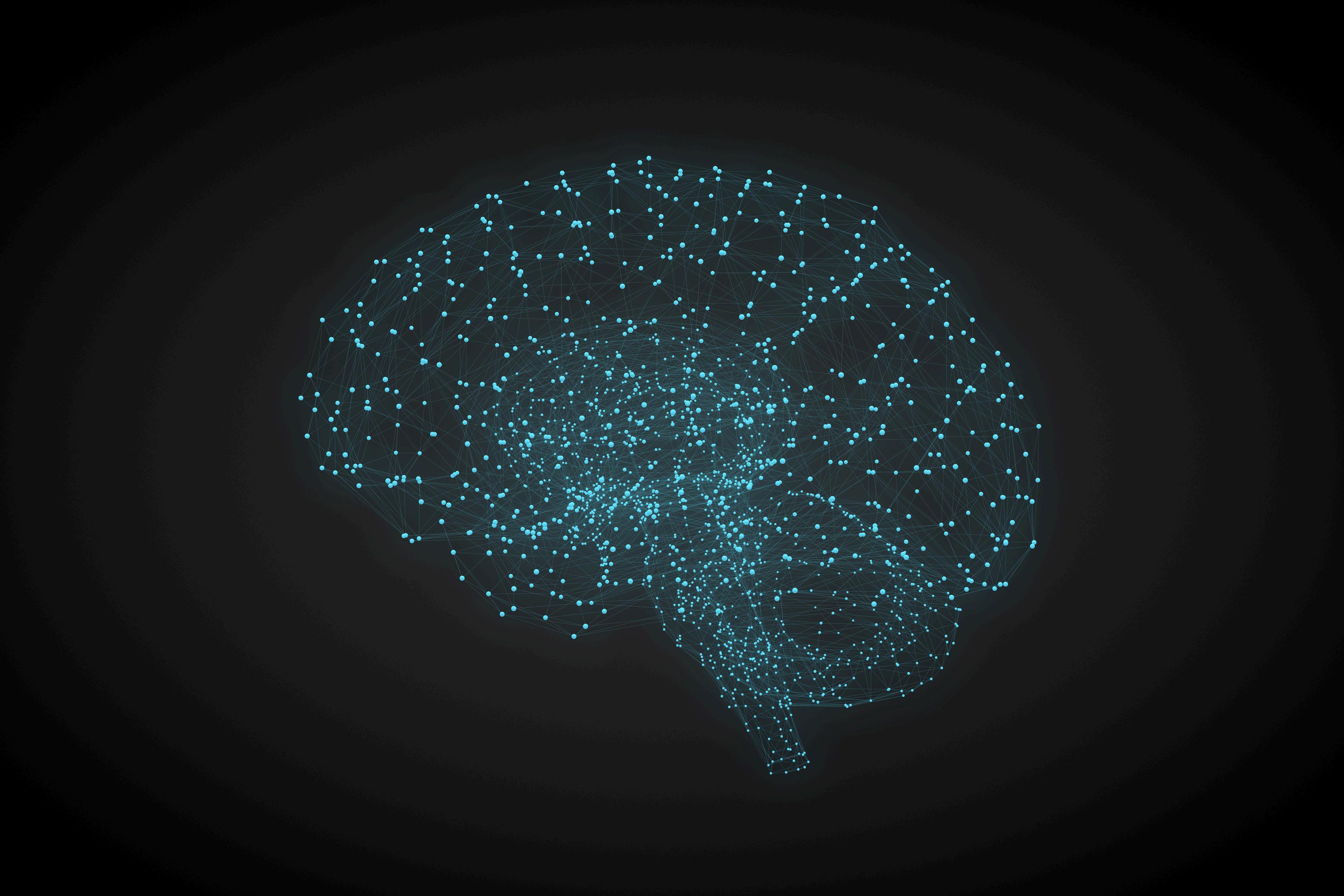
Samriddhi Shah, Grade 10
Answers available on the last page!

2 Plays a key role in forming and consolidating new memories
5. Plays a role in motivation, pleasure, and reward processing.
6. The brain's ability to change and adapt due to experience
8. Hormones that help us deal with stress and reduce feelings of pain.
9. Small brain structure processing emotions, fear, anxiety, and storing emotional memories
1. Basic human ability to be fully present, aware of where we are and what we're doing
3. The process by which new neurons are formed in the brain.
4 Process of decreasing reactions to certain stimuli
7. Brain region coordinating movement, balance, and learning, regulating motor functions efficiently
Aanika Krishnan, Grade 12
Have you ever wanted to challenge the norms space-time continuum? Sense something beyo what is presented by reality? Or perhaps traver plane of existence? To experience what could feel like a lucid dream is to experienc hallucinogenic trip. Also known as psychede hallucinogens are a class of psychotropic drugs are said to change one’s perception of reality, o other words, expand one’s consciousness.
‘Hallucinogen’ stems from the word ‘Hallucin derived from the Latin ‘(h)allūcināri,’ which sign ‘to wander the mind’. Hallucinogens occur naturally; an ancient example is the Vedic reference to soma, a substance said to elevate consciousness However, the beginning of modern research on hallucinogens dates to 1938, when Swiss chemist Albert Hofmann was attempting to develop an analeptic drug derived from a fungus known as ergot. Instead, he accidently synthesised the first lysergic acid diethylamide 25 –the infamous LSD Good one, Hofmann

Following concerns of their abuse, adverse effects, and the development of a stigma associated with counterculture, hallucinogens were criminalised by the U S government, though its illicit use continued
The use of hallucinogens and LSD in particular was popularized in the late 1950s and early 1960s, when psychologist Timothy Leary advocated for its experimentation to serve recreational purposes. It became an emblem of Hippie culture in the West and inspired the name of the genre ‘Psychedelic Rock’ This music, pioneered by artists and bands like Jimi Hendrix, Pink Floyd, and even The Beatles, emphasised the sound and texture of music that mimicked the quality of a psychedelic trip, including techniques like reverb and distortion
What makes LSD especially intriguing is its ability to block cancer cell growth, as claimed by one publication in 1959. While this is only speculative, the therapeutic effects of LSD were and still are being investigated in treating anxiety, depression, and perhaps even cancer
In general, hallucinogens work by disrupting neurochemical pathways. Many hallucinogens such as LSD, mescaline, and psylocibin act on the serotonergic system These are serotonin receptor agonists, meaning they mimic the hormone serotonin by binding to and stimulating serotonin
receptors. Serotonin regulates many functions including mood, sleep, and sensory perception. The specific receptor activated by these drugs is the 5HT2A receptor, and it is predicted that this results in increased spontaneous firing of neurons, predominantly in the brain’s prefrontal cortex. These drugs are associated with hallucinations, spiritual experiences, and an enhanced state of introspection.
Other hallucinogens act on the glutamatergic system, including ketamine, PCP (Phencyclidine), and DXM (Dextromethorphan). Glutamate is an excitatory neurotransmitter that controls learning, memory, emotions, and pain perception. hallucinogens act as NMDA (N-me aspartate) receptor antagonists, meaning the the NMDA receptors that glutamate otherwise bind to. These hallucinogens are ge dissociative in nature: linked with feel detachment from the self and the surroundings
The use of hallucinogens is generally discour a global scale. However, some jurisdictio example, in the Netherlands, have decriminal use of psilocybin mushrooms (‘magic’ mushrooms) for recreational use Substances like ketamine are legal for medicinal use as antidepressants On the flip side, LSD and marijuana (cannabis) are classified as Schedule I drugs, while PCP is classified as Schedule II under the Controlled Substances Act.
concoction and is exempt from the NDPS Act.
Hallucinogens are a fascinating class of drugs preceded by a complex and controversial history. Regardless of the legal circumstances, it is always advisable to be cautious in their consumption. Even ‘reasonable’ hallucinogenic doses can result in ‘bad’ trips: states of paranoia, anxiety, or even psychosis. If you are allured by the glamour of experiencing a heightened sensory experience (a high, if you will), I would suggest tuning into some Tame Impala instead.

In India, the use of psychoactive drugs is largely restricted under the Narcotic Drugs and Psychotropic Substances (NDPS) Act. Nevertheless, cannabis (colloquially, weed) holds a certain cultural significance. Ganja, as cannabis is locally known, is commonly used in the beverage bhang. This is legally permissible as the use of the leaf extracts as opposed to the flowers leads to a less potent
Spraha TS, Grade 12
Is it possible to learn while you sleep? Yes, and here's why. Sleep plays a crucial role in learning and memory formation, with scientists now able to identify and consolidate specific memories during sleep Sleep learning (also known as hypnopædia or hypnopedia) has intrigued both artists and scientists, sparking imagination about the potential to enhance productivity by learning during sleep.
A recent study led by Scott Cairney and Bernhard Staresina explored this further. Participants were asked to learn associations between words and pictures before a nap, with some participants exposed to word cues during sleep to reactivate memories Results showed improved memory for associated pictures, with EEG recordings revealing increased sleep spindle activity during memory reactivation.

For instance, in the popular cartoon "Dexte Laboratory," Dexter attempts to learn Fren overnight using a device that plays French phras while he sleeps. Although Dexter's attempt leads comedic mishaps, the idea of learning during sle remains captivating.
Recent research sheds light on the mechanism behind learning during sleep Studies have show that non-rapid eye movement (non-REM) slee particularly sleep spindles, is beneficial for memo consolidation. These Sleep spindles, sudden spikes brain activity during non-REM sleep, play a key ro in memory reactivation
hese findings suggest that sleep spindles facilitate memory processing during sleep, enhancing memory onsolidation. This knowledge could lead to trategies for boosting memory during sleep, such as nducing sleep spindles through brain stimulation. While learning from scratch during sleep may emain a distant possibility, research continues to xplore the possibilities for learning and memory ormation during sleep.
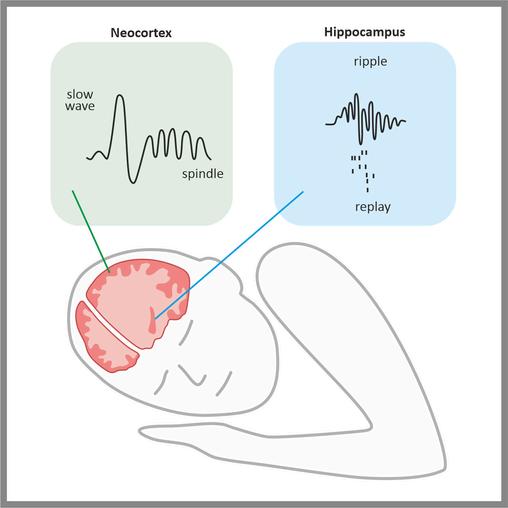
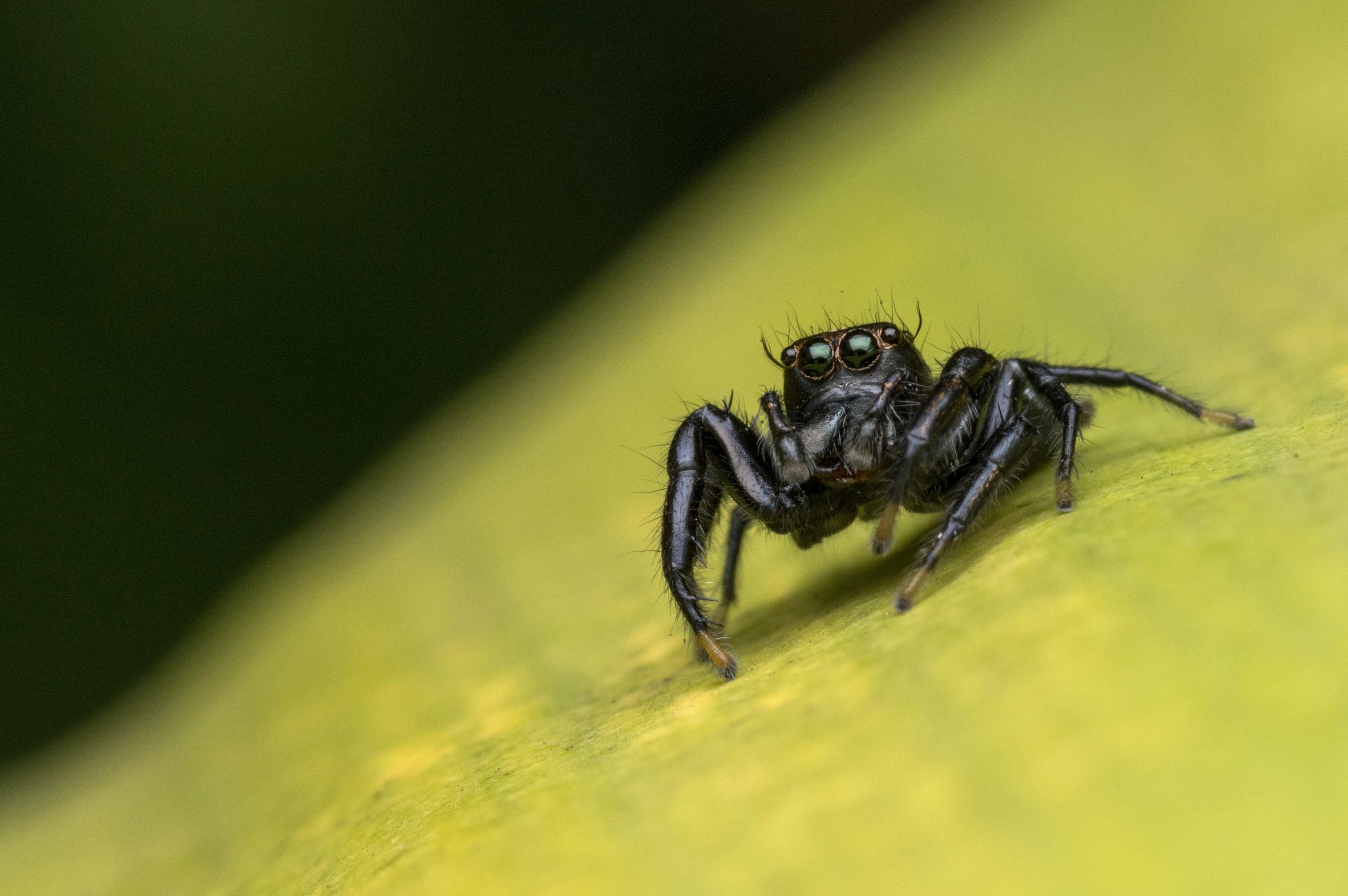
Tia Shukla, Grade 7
According to the IUCN (International Union of the Conservation of Nature), more than 42,000 species are threatened by extinction. These animals share the burdens of poaching and deforestation. Here are 3 of those animals
Golden Lion Tamarin monkeys spend most of their time in the tree canopy of the Atlantic Forest, mainly in Brazil: together in groups called troops. Their diet includes fruits, insects, and small invertebrates They live for about 15 years An adult can weigh up to 29 ounces, with a tail typically longer than the rest of the body.
By the 1970s, concerned biologists estimated that only around 200 golden lion tamarins were left in the Atlantic Forest So, zoos that already had them in captivity decided to breed more tamarins and prepare the families to return to the wild. They let the monkeys out of their normal enclosures and taught them essential skills such as how to hunt for their own food Now, nearly 2,500 golden lion tamarins live in the Atlantic Forest About a third of these are descendants of the captive-born tamarins from the zoo program. Reforestation programs are still in action to give their home back to the tamarins.

They live on mountains in Afghanistan, Bhutan, China, India, Kazakhstan, Kyrgyzstan, Mongolia, Nepal, Pakistan, Russia, Tajikistan, and Uzbekistan. They are shy, with their spotted coats act as cloaks of invisibility by blending into the rocky mountains Thus, they are often known as "Ghost Cats" or “Ghost of the Mountains.”
Since they are rare to see researchers must use hightech tools to spy on the shy animals. They often carefully trap the wild cats to examine them and put on satellite radio collars to track where they roam They put motion-activated digital cameras in the leopards' mountains to capture images of them.

They have powerful legs and can jump as far as 50 feet So, snow leopards catch their prey by stalking them and then suddenly pouncing on the animal Their main diet consists of wild goat, blue sheep, marmots, hares, and even some birds.
A snow leopard’s soft, dense fur keeps it warm in the freezing weather. Their large, padded paws work like boots, letting them walk on the soft snow without sinking into it. Unlike other big cats, snow leopards can mew, growl, and puff; yet, they don't roar.
Protected areas have been established throughout their habitats to keep these marvelous creatures safe from dangerous poachers
Sea otters are part of the weasel family. Their webbed feet help them swim fast, and their tail helps them steer. Otters float on their back while sleeping.
They mainly eat mussels, shellfish, crabs, squid, octopus, and fish Intriguingly, they use rocks to help them open their food. After a meal, sea otters wash themselves: cleaning their coat with their teeth and paws.They need to keep their fur coat clean so it stays waterproof. This is because sea otters have thick underfur that traps air to form an insulating layer against chilly waters, as opposed to the usual layer of fat many other marine animals have.
Early in the 20th century, only 1,000 to 2,000 sea otters remained They are still on the endangered list as although their population has increased, their geographic range has not expanded to match what it used to be.

People have started taking care of these animals by replanting trees and protecting wildlife habitats. Now, countries have declared parts of forests as sanctuaries or protected areas. One can hope that we will see more of these animals roaming freely in the wild in coming years
Nivrithi Balachandran, Grade 7
Lyssavirus, more commonly referred to as ‘rabies’, has haunted mankind for ages. It infects the majority of mammals such as humans and livestock but is especially dangerous to dogs. The fatal disease causes 59,000 deaths annually. The components of the lyssavirus are simple, even for a virus It is made up of five main proteins; Glycoprotein, Matrix, Nucleoprotein, Phosphoprotein, and Polymerase. These five proteins help the virus to perform the following steps: to reach the brain, avoid the immune system, infect the host, multiply, and infect another host.
The lyssavirus reaches the brain by hijacking the nervous system The neurons are living electrochemical wires that transfer signals and can stretch for up to 1.5 meters. They have cellular machinery on one side and a terminal on the other. The terminal is where cells communicate using chemicals The virus stealthily enters the nerve cell through the terminal. Now, the virus has a problem. It has to reach the cellular machinery, take over,
and multiply so it can successfully infect the host Since the nerve cell is so long, and the cellular machinery is on the other end of the cell, the virus need an efficient way too reach the other side.
Nerve cells have microtubules spanning their insides giving support to the cell and providing a delivery system from one side of the cell to the other. The Dynein motor is a motor which delivers packages using the microtubules It’s made up of 50 different kinds of proteins and looks like a pair of legs. Lyssaviruses use one of their five proteins to ask the system to head for the nucleus So far, your immune system hasn’t detected anything haywire, because the virus has shut down the system that signals the production of antiviral mechanisms known as interferons. Interferons are responsible for telling your civilian cells to shut down protein making factories so the virus cannot replicate efficiently. Since the Lyssavirus has shut down the interferons, the virus stays almost invisible to the immune system
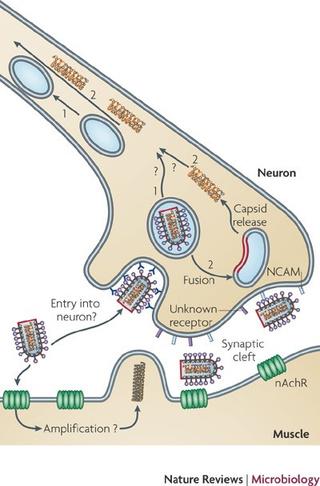
After this, the virus slowly jumps from cell to cell, eventually making its way to its desired destination: your brain This phase may take weeks, months or even years, based on a number of different factors, like how many viruses got inside or where. Finally, once the virus reaches your brain stem, your immune system becomes aware that something is wrong Your immune cells can be commanded by nerve cells. They can also be asked to self destruct by the neurons. Since the lyssavirus has infected the neurons, it immediately demands the selfdestruction of immune cells.
Although not proven, it is thought that the lyssavirus kills its host by messing up the communications between neurons. This can lead to confusion, aggression, and paralysis. Once the virus has infected the brain, it heads down the brain stem and into your salivary glands. Here, the virus infects your saliva, ready for you to bite and infect another host. After this stage, you develop encephalitis: the swelling of the brain with side effects like paralysis One after the other, your organs fail and you fall into a coma. After this phase, you are dead as there is no effective therapy once symptoms have appeared Almost no one has survived the virus infecting their brain.
Furious Rabies
Death occurs a few days after bite due to cardio-respiratory arrest.
Symptoms:
Hyperactivity, hallucinations, lack of coordination, fear of water, fear of fresh air.
Occurence: Responsible for 80% of Lyssavirus deaths
Paralytic Rabies
Death occurs eventually, it kills much slower and it’s symptoms are less dramatic
Symptoms: Paralysis starting from wounded site, eventually rendering individuals comatose.
Occurrence: Responsible for 20% of deaths
Once bitten from a virus-carrying animal there is only one effective solution: A vaccine. As the lyssavirus acts very slowly, the vaccine can be given even after you’ve been bitten, making it very helpful.
So, don’t worry, dying after being bitten by an animal is pretty unlikely with access to immediate healthcare. Regardless, remember to stay safe!
Tia Shukla, Grade 7
Have humans don’t h
Human when w and cli stopped human purpose you si animals of the w
In verte for mo They commu can also onto o that liv while Some a into a s cold Marine swimm crocodi to prop

Here are some specific ways in which some of the animals in the animal kingdom use their tails:
Howler monkeys use their tails to navigate their way through rainforests
Horses and cattle swish their tails to get rid of biting flies.
Horses, cattle, porcupines, and pangolins use them as defensive weapons against predators or insects
A cat’s and dog's tails are important for communication: for example, a dog wagging its tail means that it is excited.
Fish and birds use their tails to guide and maneuver themselves while swimming or flying
Dinosaurs and kangaroos swing their tails side to side to balance their heavy heads and bodies while walking on two legs. Sometimes, they even use their tail like an extra leg!
Stingrays, scorpions, etc have stingers or poisonous tails they to defend themselves from predators
Rattlesnakes' tails rattle shook because of their dry skin, scar predators.
Cheetah tails act as rudders during high-speed chases




Yet, it is important to note that animals can evolve to lose such body parts, like we humans lost our tails. Is it possible that other animals will also soon evolve to develop something entirely different to their current tails?




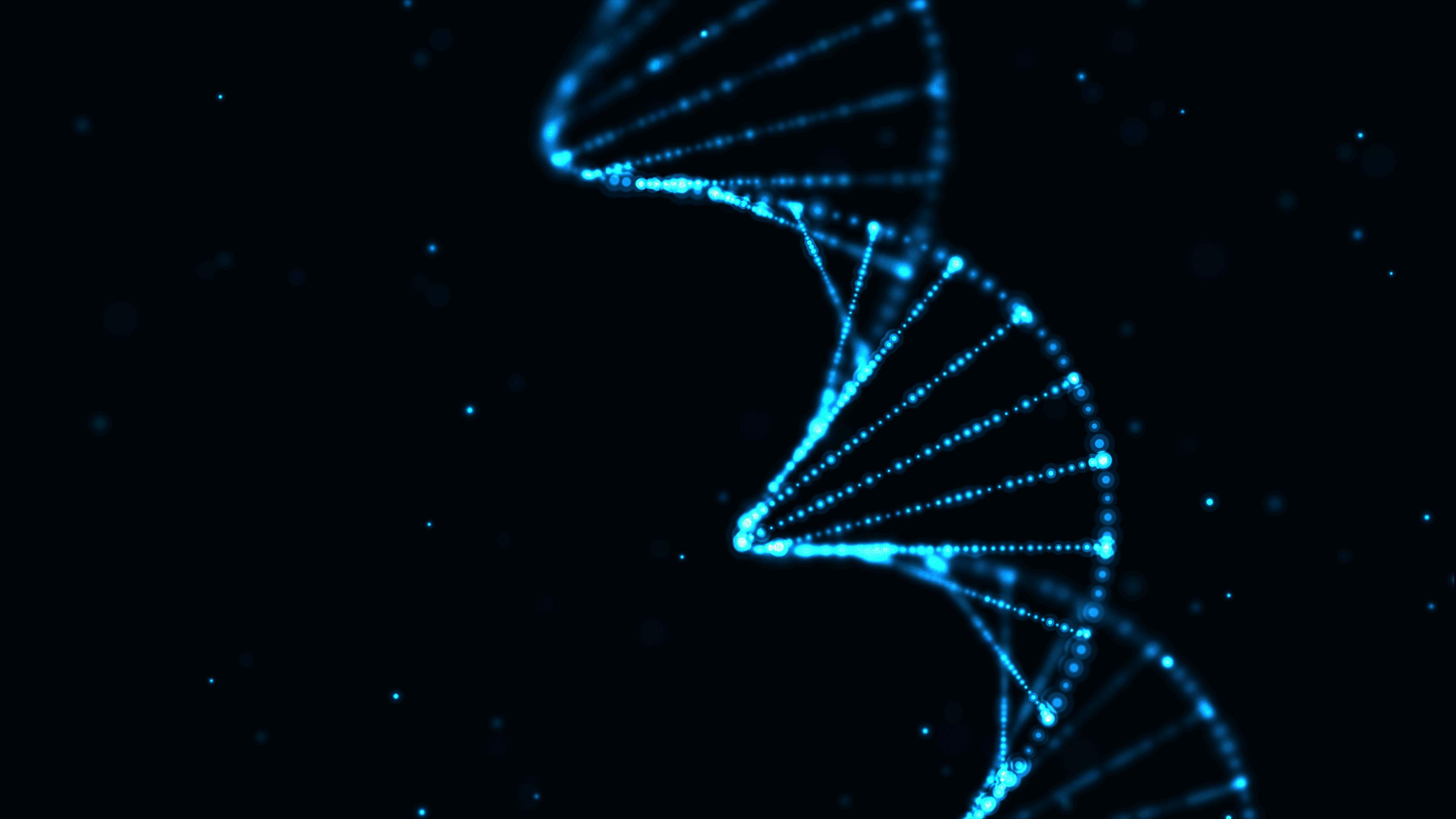
Epigenetics refers to the effect of the environment on our genes. The study of this phenomenon has only grown more relevant over time, as scientists uncover not only the various interactions it has with human behaviour and development but also its significance in various disorders such as schizophrenia.
One of the primary epigenetic mechanisms is methylation DNA methylation is a way to regulate gene expression, effectively turning genes on-or-off. This works by the addition of a methyl group to specific bases on the DNA: thus preventing this section from being read by the mRNA during the transcription process by making it more difficult for transcription proteins to bind or through the formation of tightly packed and inactive heterochromatin DNA In humans, modifications to cytosine (CpG dinucleotides) are the most common as a stable site for methylation.
This methylation can arise in response to specific environmental conditions where it may be advantageous not to express some genes and contributes to the flexibility of the epigenome in ensuring organisms can appropriately react to changing contexts. However, they are also implicated in the occurence of disease where some hypermethylation of specific important genes (e.g. BDNF or FOXP2 in schizophrenia) might arise and lead to disorders.
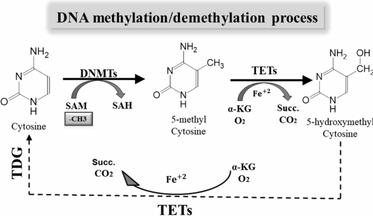
Thus, one potential avenue to explore in treating various disorders with epigenetic causes could be the prescription of demethylating agents to those ffli t d Demethylating agents are at act upon epigenetic ion markers to remove ncing effect and increase ession of those genes. They used in cancer treatment, me common examples
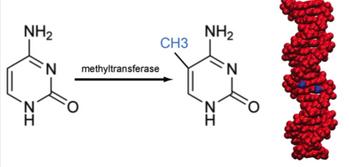
including azacitidine and decitabine.
There exist two main classes: nucleosides, which incorporate into the DNA, and non-nucleosides, which act through alternate methods. Both inhibit DNA Methyltransferases, a class of enzymes that catalyse the transfer of methyl groups onto genetic material, and as a result prevent DNA methylation from occurring This suggests that these agents might combat significant hypermethylating factors for specific disorders. Demethylation might effectively combat an integral contributing factor to the disorder and could thus potentially be used in cases where people are at high risk and genetic vulnerability to developing the disorder. Such a route may also serve as treatment for those that have already acquired the illness, as DNA methylation is noted to be reversible through the actions of enzymes such as Ten-Eleven Translocation Dioxygenases
Thus, it would be advisable to keep an eye on the use of demethylating agents in the treatment of disorders with epigenetic links in the future.
Spraha TS, Grade 12
Synthetic biology is a rapidly advancing field that merges biology and engineering, allowing scientists to redesign natural biological systems to create new and improved functions. This innovative discipline takes the tools provided by nature such as genes, proteins, and entire metabolic pathways and modifies them to address some of the world’s most pressing challenges, from developing new medicines and biofuels to creating sustainable materials and combating climate change.
At its core, synthetic biology involves the manipulation and redesign of DNA, the fundamental building block of life By altering the genetic code of organisms, researchers can introduce new traits, optimize natural processes, or even design entirely new biological systems that do not exist in nature. This level of control and precision opens up a world of possibilities, enabling scientists to engineer microorganisms to produce pharmaceuticals, clean up environmental pollutants, or generate renewable energy.
One of the key aspects of synthetic biology is its interdisciplinary nature. It brings together expertise from molecular biology, genetics, chemistry, computer science, and engineering to create a cohesive approach to biological design. Researchers in synthetic biology use advanced tools like CRISPR-Cas9 for gene editing, high-throughput sequencing technologies, and computational modeling to predict and design the behaviour of synthetic organisms
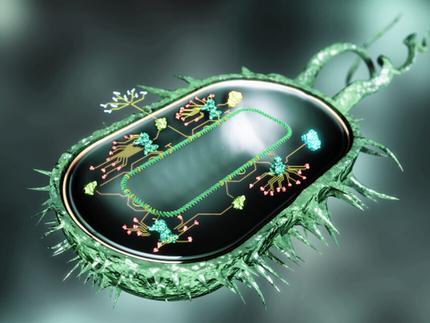
A prime example of synthetic biology's potential is in the field of medicine Scientists are engineering bacteria and other microorganisms to act as living factories that can produce complex drugs, such as insulin or cancer therapeutics, in a more efficient and cost-effective manner. Moreover, synthetic biology is paving the way for personalized medicine, where treatments can be tailored to an individual's genetic makeup, ensuring higher efficacy and fewer side effects.
In the realm of environmental sustainability, synthetic biology offers innovative solutions to reduce our reliance on fossil fuels and decrease carbon emissions For instance, researchers are developing engineered microorganisms that can convert agricultural waste into biofuels, providing a renewable source of energy. Additionally, synthetic biology is being used to create biodegradable plastics and other materials that can replace environmentally harmful products
However, with great power comes great responsibility. The ability to redesign life at the genetic level raises important ethical and safety considerations. As synthetic biology continues to advance, it is crucial to establish robust regulatory frameworks to ensure that these technologies are developed and used in a way that is safe, ethical, and beneficial to society. This includes addressing concerns about the potential for unintended consequences, such as the release of synthetic organisms into the environment or the misuse of genetic engineering for harmful purposes.
The future of synthetic biology is incredibly promising, with the potential to revolutionize fields as diverse as healthcare, agriculture, energy, and environmental conservation. As researchers continue to push the boundaries of what is possible, synthetic biology will likely play a central role in solving some of the most complex and challenging problems facing humanity today.
In summary, synthetic biology represents a transformative approach to using nature’s tools in new and innovative ways. By redesigning biological systems at the molecular level, scientists are unlocking new possibilities that could lead to significant advancements in medicine, environmental sustainability, and beyond The continued development of this field will require careful consideration of ethical and safety issues, but the potential benefits are immense, making synthetic biology one of the most exciting and impactful areas of scientific research in the 21st century.
Avanthika Krishnan, Grade 12
There are some well-followed rules across all organisms. Among these is the universality of the genetic code, the most conserved feature of life. All organisms follow the Standard Universal Genetic Code, which specifies the combinations of possible codons in our transcribed mRNA and the corresponding amino acid it codes for, familiarly seen in table form. This means that a specific codon will produce the same amino acid regardless of if it is being translated in a blue whale or an ant. Of special interest are the exceptions to this common link between living organisms: when this universality is broken.
In all organisms, 3 codons cause the process of translation to stop or end. However, a type of protists known as ciliates are so prone to genetic variation that they can adapt and change beyond the universality of the genetic code! There are more than 10 different ciliates discovered thus far that have modified the translation of one or more stop codons to code for functional amino acids, breaking free of universality
So how does this deviation from the norm occur? This can largely be attributed to the atypical functioning and structure of ciliates which, unlike most unicellular organisms, have a separate haploid nucleus to exchange during sexual reproduction and a separate diploid nucleus for somatic functions with a large variety and number of short gene sequences. The haploid nucleus-or the MIC-commonly undergoes the rearrangement of the genetic sequences which are passed on to offspring. To change a stop codon to become functional, its expression or translation must also be
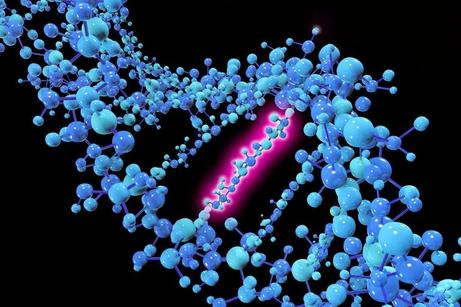
of the proteins responsible for the disassembly of the translation complex when a stop codon is detected, and by manufacturing tRNA molecules that can code for the stop codon through mutations or RNA editing In doing so, the ciliates are able to successfully change the expression of different codons in their genome.
Recently, scientists have discovered a ciliate which doesn’t just break universality, but even goes beyond the conventions of the unconventional In all ciliates where the amino acids coded for by the stop codons UAA and UAG are modified, this modification is typically to produce the same amino acid. However, in this ciliate, the stop codon UAA codes for the amino acid lysine and UAG codes for glutamic acid. This goes to show the truly unpredictable nature of this kind of genetic variation, and as a result of this specific deviation, shows us that novel genetic codes can arise in the most unlikely places without any external intervention. This highly significant finding not only allows us to appreciate and recognise anomalies to established and evidenced generalisations, but also prompts us to understand the nature of the mechanical constraints that link the 2 stop codons and how they could be naturally overcome by organisms.

A huge thank you to all the contributors! Your quality of work raises the bar higher with each issue. Every page is bursting with interesting ideas. A special commendation to the contributors who have been consistently writing and creating content since Day 1- Your dedication to this subject is truly inspiring.
Thank you to the HODs, Aditya and Avanthika, for your efficient work ethic. Thank you to our teacher supervisor, Ms. Deepa L, and to the SLT at TISB for enabling this magzine to be a part of the school community.
And of course, a big thank you to our readers! Everyone in The Cell Cycle team hopes to positively impact your understanding of the world, whether through raising fascinating ethical questions, or by introducing new and revelatory facts, and more.
As we strive to embody the key principle of adaptability, we strongly encourage you to reach out to our team so that we can inculcate your thoughts, opinions, and criticisms to ensure our next edition is even better
Hope you had a stimulating read!
Yours Sincerely,
The Cell Cycle Team